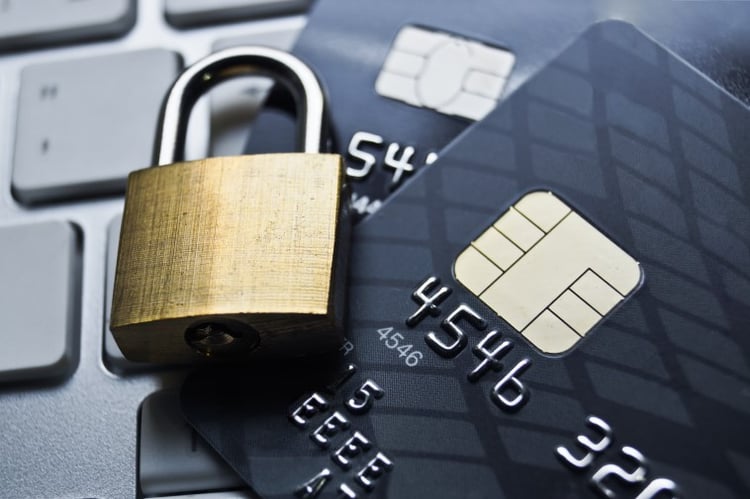
To help fleet managers set up their Voyager fuel card program, we have created this comprehensive guide explaining the different options available, as well as the best ways to utilize these controls. It is essential to optimize the purchase controls and monitoring tools to minimize unauthorized fueling.
Voyager card controls
From the moment they’re enacted, purchase controls help fleet managers prevent unauthorized use, making them an essential part of securing your program. Because it can be difficult to decide which settings fit your needs, we’ve summarized the best practices below so you can make the right decisions. To ensure your team understands their responsibilities in following these guidelines, we recommend outlining the controls you pick in your driver fueling policy as well.
PIN/Driver IDs
The ability to set up individual PIN numbers for each driver is one of the biggest benefits of the card. If you are using a fueling solution that does not have the technology to create unique PIN numbers, your company is at risk for fraud or theft. When you set up your account, you can create a 4-6-digit PIN number for each driver that is unique to them. You should not use driver birthdays or any other personal numbers to prevent others from easily guessing their PIN, and they should never write the PIN on their card.
When initiating your program, you can choose between driver and vehicle cards. Driver cards are only used by one person, and that user must enter their unique PIN to make purchases. Vehicle cards can be used by many drivers, but each person will use a unique PIN that links them to the transaction for monitoring and reporting. Both options provide accountability and protection, ensuring that employees are not spending more than necessary. The main determinant in choosing between driver and vehicle cards is whether your drivers switch vehicles. If your vehicles are driven by multiple drivers, a vehicle card may be the best option for your fleet.
Hard and soft Voyager card controls
There are two different options for the controls listed below. The first type, hard controls, cannot be overridden, and your driver’s cards will be declined at the pump if they attempt to fill up outside of their allowances. This is a useful setting for fueling guidelines that should never be broken.
If you need more flexibility choose soft controls, which will allow the driver to call into the support center for a one-time override. Once they have this approval, they will be able to fill up at the pump and get on their way. If you anticipate that there may be exceptions to your fueling policy, soft controls may be a better idea for your company.
Transactions per day
Enacting transactions per day controls are an easy way to prevent employee misuse, and fleet managers should review previous purchasing history to determine how many times a day your drivers need to fill up. From there, you can determine a limit that allows your drivers to conduct their business while still preventing abuse. While setting up this control, managers should be mindful of possible complications at the pump. Occasionally a faulty pump may cut off the fueling part way, leading to a frantic call from a driver when their card won’t work due to the transactions per day limit. That’s why we recommend allotting for one extra fueling than expected for the perfect blend of convenience and security!
Dollars per transaction, day, week and month
Setting transaction limit prevents drivers from purchasing more fuel than they will need. For the dollar per transaction limit, use the fuel tank capacity multiplied by the average price of fuel in your area to determine the right dollar amount for this control. You may want to increase the limit slightly to allow for fuel price increases. Because of the varying pre-authorization amounts that gas stations send to Voyager for approval, we recommend using a daily dollar limit rather than a dollar per transaction limit.
The best Voyager card controls to use are dollar limits per day, per week and per month. If you know the exact amount you want your team to spend on fuel every day, week or month, you can enact limits to stop them from going over. If your company has more variance in your fueling patterns, ensure that the limit is higher than the maximum use anticipated.
Day of week
For companies that operate on a consistent schedule, setting controls by day of week is a simple way to reduce unauthorized fueling. Companies can restrict weekend transactions, select designated fueling days, and more. Before managers enact these controls, they may want to confirm that there is no reason for drivers to fuel outside of the typical workdays. For example, your drivers may usually work Monday through Friday, but occasionally encounter special situations that require them to work on the weekend. In these cases, you should leave the weekends open while creating an alert to notify you if weekend fueling occurs.
Time of day
For businesses that operate on set schedules, it may be helpful to eliminate transactions during non-work hours. Limiting by time of day makes it easy to restrict all purchases to operating hours. If your employees are not working, then their card should not either.
State lock-out
If your company only operates in certain states, locking out the rest of the country is an easy way to prevent abuse or fraud. There is no reason to leave areas open if your drivers are never going to be there!
Monitor your Voyager card usage.
In addition to enacting purchase controls, fleet managers should monitor usage for unusual activity. Vendors simplify this responsibility by providing online access, emailed invoices, alerts, and e-receipts so fleet managers can easily manage.
Online access
Managers should consistently log in to their card provider’s online portal to view transactions and search for suspicious behavior. You can review your transactions, compare them to your previous history, and watch for drivers that may be breaking your fueling policies.
Emailed invoices
If you use invoices to monitor your fleet’s activity, opt to receive them by email so you can search through them as soon as possible. Reviewing invoices is the best way to check for suspicious behavior or charges that need confirmation. Most vendors have a time limit to report any fraudulent charges, so ensure that you’re checking your invoices consistently.
Email alerts
If you feel that certain purchase controls might be too restrictive for your business, you can opt to receive email alerts instead. Alerts can be created for all of the controls listed above, but they will still allow the transaction to process. You will then receive an email alert with the details of the purchase, allowing you to follow up with the driver to ensure the purchase was legitimate and ask them to comply with your fueling policy in the future.
E-Receipts
If you manage a small to medium-sized fleet, you may want instant notifications for all transactions made using your fuel card. E-Receipts alert you of the transaction amount, time, date, card, driver, and location. Though this allows for the utmost control of your fleet, the sheer volume of emails may be overwhelming for companies with dozens of vehicles in use.
Conclusion
Voyager fuel cards provide comprehensive purchase controls and alerts, and fleet managers should ensure that they are fully utilizing this technology. The optimal controls for your fleet depend on your purchasing trends, vehicle type, and operational needs, but this guide will help determine the best ways to secure your fuel purchasing.
Read how Voyager fleet partners can reduce your fleet fuel expense →




